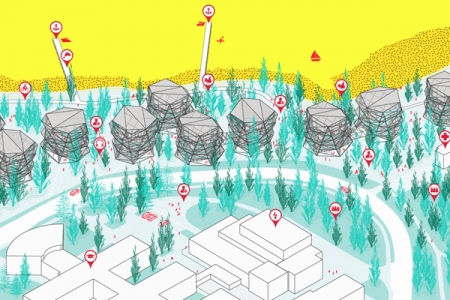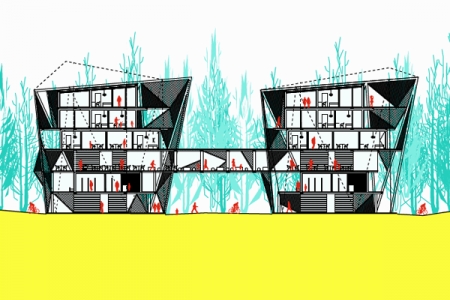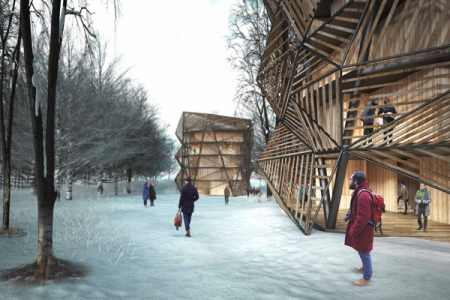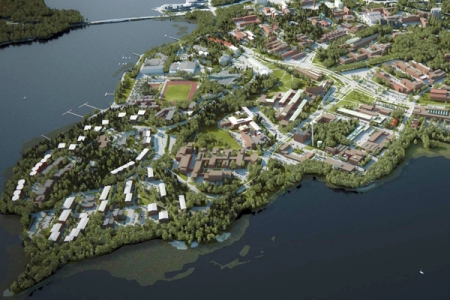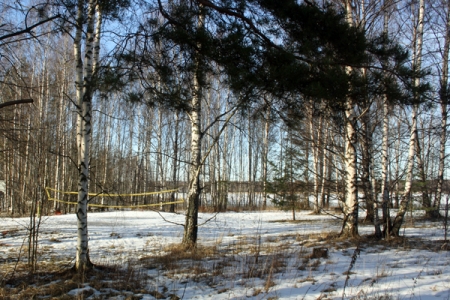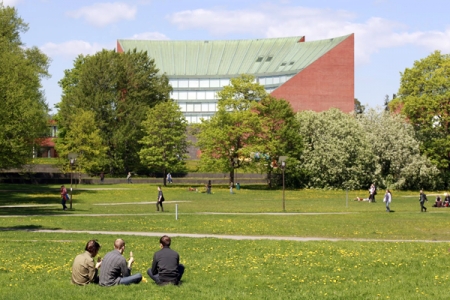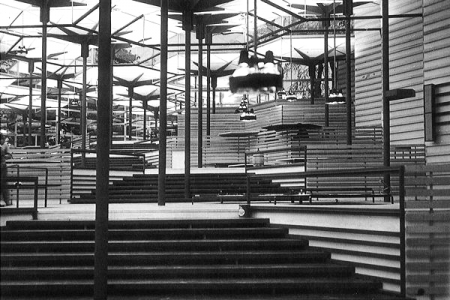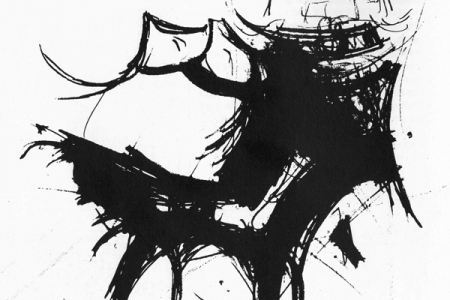Wild Synapse
Espoo (FI) – Lauréat
DONNÉES DE L'ÉQUIPE
Représentant d'équipe : Borja Sallago Zambrano (ES) – architecte ; Associés : Alan Cortez de la Concha (MX), Manuel Pinilla Fernández (ES) – architectes
Collaborateurs : Ana Georgina Hernández Aranda (MX) – graphic designer ; Fernando Alejandro Basurto Gallegos (MX), Francisco Crespo Burgueño (ES), Luisa Daza Reyes (ES), Alba Sospedra Arrufat (ES) – étudiants en architecture
BAMMM, architecture office, Madrid – España
+34 636 121299 – info@bam-mm.com – www.bam-mm.com
Voir la liste complète des portraits ici
Voir la page du site ici

A. Cortez de la Concha, B. Sallago Zambrano & M. Pinilla Fernández
INTERVIEW en anglais
Cliquer sur les images pour les agrandir
1. How did you form the team for the competition?
Borja and Manolo met at Technical University of Seville, where they both studied Architecture. After a few years of participating in competitions together, Alan joined them when meeting Borja at Technical University of Madrid, where they worked as researchers. Today, they have an office established in Madrid.
2. How do you define the main issue of your project, and how did you answer on this session main topic: Adaptability through Self-Organization, Sharing and/or Project (Process)?
When we started working on the competition in Espoo, we were strongly aware of the city and Aalto University campus’s proactive attitude. An attitude that we have included in our proposal. This is why we think “Wild Synapse” is not a Project, but an attitude.
The program surges from the data processing of users –which we call "Players"–, available objects –"Toys"– and activities that can be done with them –"Games". This complexity is translated into programmatic adaptability. This form of adaptability comes double – not only adaptability given to each of the floors, but also adaptability in the inhabiting relation with the building skin, filtering the contact with nature in each of its levels.
3. How did this issue and the questions raised by the site mutation meet?
We started locating the voids in the site ecosystem. We placed the different implantation nodes, connecting them to each other and to other realities, but not necessarily linked in a physical way. Our proposal seeks to appropriate multiple conditions going beyond nature –atmospheric, relational or even topological conditions. This becomes architecture through its construction in the woods. The series of events come naturally, allowing the conditions to give the program its identity.
4. Have you treated this issue previously? What were the reference projects that inspired yours?
Letting nature run its course is an issue that defines our attitude towards our work. We try to enable this process through our architecture. In our proposal, we decided to connect physical realities –such as the woods and the campus– with other realities that are not perceived at first sight. As a tactic, we introduce the synapse –like the one produced in a human brain– as a way of intervention.
We have been inspired by projects and manifestos as well. The 1958 Spanish Pavilion for Brussels Expo, by Spanish architects Corrales and Molezún, is an important reference. This project introduced the construction of a space based on constructive parameters, modules, and geometry, giving the building the ability to adapt to its environment — this can also be seen on Pietilä’s drawings. We also highlight the work in wood of Finnish tradition, trying to learn from it and applying the local wisdom to our proposal.
5. Today –at the era of economic crisis and sustainability– the urban-architectural project should reconsider its production method in time; how did you integrate this issue in your project?
We embrace adaptability. The construction of these spaces will be done with the techniques and materials of the site tradition, making clear the natural cycle of the domesticated ecosystem. We place this architectural pieces with the hope that time issues their better integration into the site, promoting human and non-human interaction. To this attitude is what we refer to as “Wild Synapse”.
6. Is it the first time you have been awarded a prize at Europan? How could this help you in your professional career?
Borja and Manolo participated in Europan 12 together, and now with Alan, this marks the first time they enter a competition as a three-member team. With all its associates being under 30, winning Europan means a lot for the future of the office, and hopefully the opportunity to develop their careers in research, teaching, and above all, construction. This represents a game changer for them, and the potential to continue moving their architectural ideas forward.
